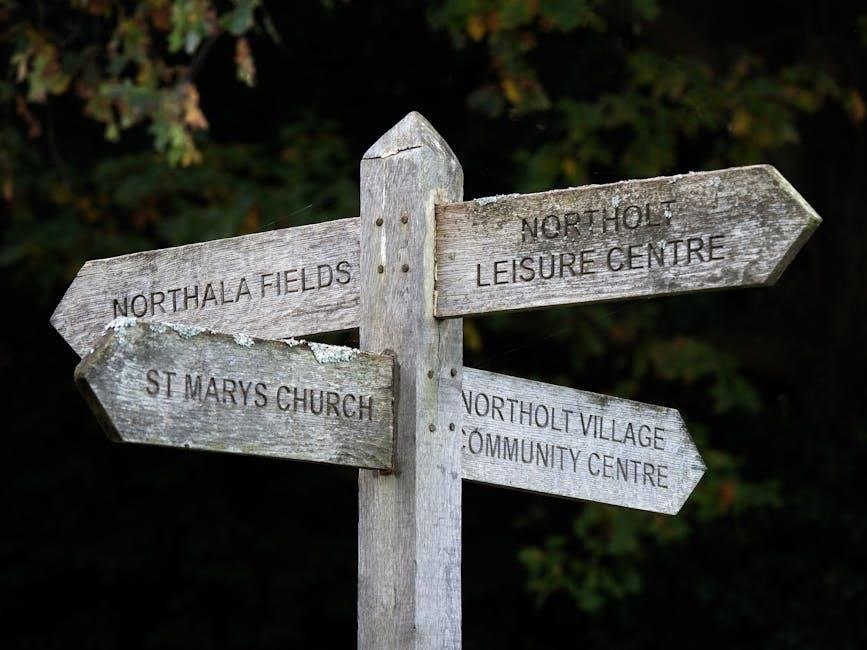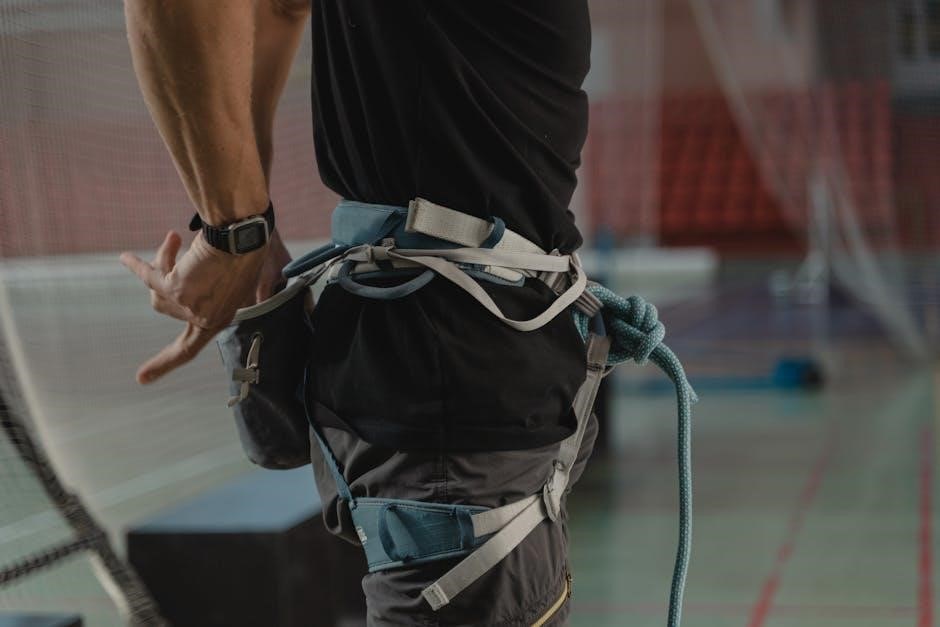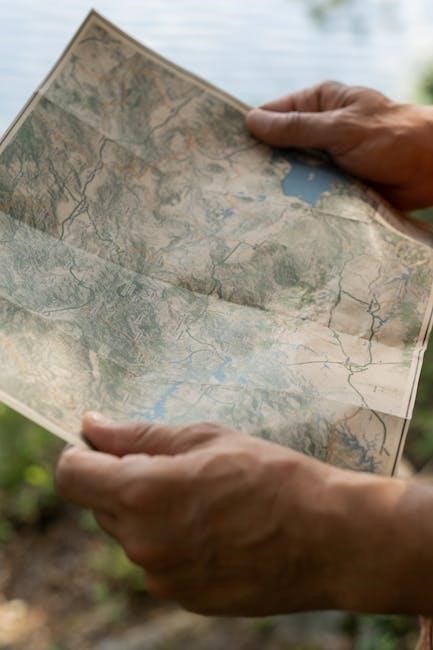
Andrew Biel’s Trail Guide to the Body is a comprehensive‚ hands-on guide to human musculoskeletal anatomy‚ widely used in massage therapy and kinesiology programs worldwide.
1.1 Overview of the Book’s Significance
The Trail Guide to the Body stands as a landmark resource in manual therapy education‚ offering a unique‚ accessible approach to understanding human anatomy. Its detailed‚ layered illustrations and hands-on learning methods make it indispensable for professionals and students alike. The book bridges the gap between theoretical anatomy and practical application‚ making it a cornerstone in massage therapy‚ kinesiology‚ and movement studies. Its widespread adoption underscores its value as a tool for both education and real-world application in therapy settings.
1.2 Target Audience and Purpose
The Trail Guide to the Body is primarily designed for massage therapy students and professionals‚ though it also serves physical therapists‚ chiropractors‚ and other manual therapists. Its purpose is to provide a practical‚ hands-on guide to understanding musculoskeletal anatomy‚ aiding in the diagnosis and treatment of movement and pain disorders. The book’s accessible approach makes complex anatomical concepts easier to grasp for beginners. It is widely regarded as an essential resource in massage therapy education and a valuable tool for both students and educators in the field.

1.3 Unique Features of the Guide
The Trail Guide to the Body stands out for its unique spiral binding‚ allowing the book to lay flat during hands-on practice. It features detailed‚ full-color illustrations that break down complex anatomy into digestible sections. The guide emphasizes palpation techniques‚ helping practitioners locate muscles and bones with precision. Additionally‚ its clear‚ concise text avoids unnecessary jargon‚ making it accessible to beginners while still offering depth for experienced therapists. The book also includes practical tips for applying anatomical knowledge in real-world therapy sessions‚ bridging the gap between theory and practice effectively.

Author Background and Expertise
Andrew Biel is a renowned expert in manual therapy and anatomy‚ with extensive experience as both a practitioner and educator. His deep understanding of musculoskeletal anatomy shines through in the Trail Guide to the Body‚ making it an authoritative resource for professionals and students alike.

2.1 Andrew Biel’s Professional Journey
Andrew Biel‚ a licensed massage therapist and educator‚ began his career in manual therapy with a passion for understanding human anatomy. His hands-on experience and teaching background inspired him to create resources that simplify complex anatomical concepts. Over the years‚ Biel has become a respected figure in the field‚ blending practical knowledge with educational expertise. His journey from clinical practice to authorship reflects his commitment to making anatomy accessible to students and professionals alike.

2.2 Contributions to Manual Therapy and Anatomy
Andrew Biel has significantly impacted manual therapy and anatomy education through his innovative teaching methods and resources. His work emphasizes practical application‚ helping therapists and students understand musculoskeletal anatomy. By creating accessible tools‚ he has bridged the gap between theoretical knowledge and real-world practice. Biel’s contributions have enhanced the field‚ offering clear‚ actionable insights that improve therapeutic outcomes and educational approaches in manual therapy and kinesiology.

Key Features of the Trail Guide to the Body
The guide offers detailed illustrations‚ a hands-on learning approach‚ and practical applications for massage therapy and kinesiology‚ making it a versatile tool for anatomy education.
3.1 Detailed Illustrations and Anatomy Breakdown
The Trail Guide to the Body excels with its detailed‚ precise illustrations‚ providing a clear visual breakdown of the human musculoskeletal system. Each muscle‚ bone‚ and connective tissue is meticulously depicted‚ allowing users to grasp anatomical relationships effortlessly. The guide’s user-friendly approach ensures that complex structures are presented in an accessible manner‚ making it indispensable for both professionals and students. Its focus on functional anatomy enables practitioners to apply this knowledge directly in clinical and therapeutic settings‚ enhancing their understanding and practice.
3.2 Hands-On Approach to Learning
Andrew Biel’s guide emphasizes a hands-on approach‚ encouraging learners to engage with anatomy through touch and movement. Techniques like palpation and functional assessments help bridge theory and practice. The book’s structured exercises guide users to explore anatomical structures firsthand‚ enhancing retention and practical understanding. This tactile method is particularly effective for kinesthetic learners‚ making complex concepts accessible. By integrating real-world applications‚ the guide empowers professionals and students to apply anatomical knowledge confidently in clinical and therapeutic settings‚ fostering both skill development and mastery.
3.3 Application in Massage Therapy and Kinesiology
Andrew Biel’s guide is a cornerstone in massage therapy and kinesiology‚ offering detailed insights for practitioners. It aids in identifying muscles‚ understanding movement patterns‚ and assessing postural imbalances. The book’s clear breakdown of anatomical structures enables precise techniques for manual therapy. Professionals use it to enhance treatment plans‚ improving client outcomes. Its practical focus on musculoskeletal anatomy makes it indispensable for both students and seasoned therapists‚ ensuring effective and informed practice in clinical and therapeutic settings.
Educational Value and Practical Applications
The guide is a vital resource for anatomy education‚ offering practical insights for massage therapists and kinesiology professionals. Its clear‚ hands-on approach enhances both teaching and real-world applications.
4.1 Use in Massage Therapy Programs
Trail Guide to the Body is widely integrated into massage therapy programs due to its detailed anatomical insights and practical applications; It provides clear‚ visually engaging content that helps students master musculoskeletal anatomy through hands-on learning. The guide’s structured approach enables therapists to identify and understand muscle structures‚ fascia‚ and movement patterns‚ making it an indispensable tool for both education and professional practice. Its accessibility ensures that even beginners can grasp complex anatomical concepts effectively‚ enhancing their clinical skills and patient outcomes.
4.2 Role in Kinesiology and Movement Studies
Trail Guide to the Body plays a pivotal role in kinesiology and movement studies by providing a detailed map of the musculoskeletal system. Its 3D perspective aids in understanding muscle interactions and movement patterns‚ making it invaluable for analyzing human motion. The guide’s hands-on approach encourages palpation‚ helping professionals and students connect anatomy with functional movement. It is widely used in physical therapy‚ athletic training‚ and movement education‚ offering clear insights for improving movement efficiency‚ diagnosing issues‚ and enhancing performance in various physical disciplines.
4.3 Accessibility for Beginners
Trail Guide to the Body is renowned for its accessibility to beginners‚ offering a clear‚ structured approach to learning anatomy. Its step-by-step format and detailed illustrations make complex concepts understandable. The guide’s hands-on focus encourages learners to explore anatomy through palpation‚ bridging the gap between theory and practice. This approach‚ combined with its user-friendly language‚ makes it an essential tool for students and professionals alike‚ fostering confidence and proficiency in understanding the human musculoskeletal system.

Reception and Impact in the Industry
Trail Guide to the Body has received widespread acclaim for its clarity and practicality‚ becoming a cornerstone in anatomy education and a trusted resource for professionals worldwide.
5.1 Reviews and Testimonials from Professionals
Trail Guide to the Body has garnered high praise from professionals‚ with many lauding its practical‚ hands-on approach to anatomy. Massage therapists and educators often describe it as an indispensable resource‚ highlighting its ability to simplify complex musculoskeletal concepts. The guide’s detailed illustrations and accessible language have made it a favorite among manual therapists‚ who appreciate its focus on real-world applications. Testimonials frequently emphasize its value in both clinical and educational settings‚ solidifying its reputation as a cornerstone in the field of anatomy education and practice.
5.2 Influence on Manual Therapy Education

Trail Guide to the Body has revolutionized manual therapy education by providing a clear‚ concise‚ and visually engaging approach to understanding anatomy. Its hands-on methodology has made it a cornerstone in massage therapy and kinesiology programs worldwide. The guide’s detailed illustrations and accessible language empower students to grasp complex anatomical concepts‚ bridging the gap between theory and practice. Its widespread adoption in academic and clinical settings underscores its enduring influence on modern manual therapy education‚ shaping the next generation of professionals in the field.
Comparison with Other Anatomy Resources
The Trail Guide to the Body stands out for its dynamic exploration of anatomy‚ offering a hands-on approach with detailed illustrations and practical applications‚ unlike traditional anatomy books.

6.1 Unique Aspects vs. Traditional Anatomy Books
Andrew Biel’s Trail Guide to the Body differs from traditional anatomy books by offering a dynamic‚ hands-on approach to learning musculoskeletal anatomy; While most anatomy books focus on static images and complex terminology‚ the Trail Guide emphasizes practical application‚ making it accessible to both professionals and beginners. Its detailed yet approachable illustrations and real-world examples set it apart‚ providing a bridge between theoretical knowledge and clinical practice. This unique blend of clarity and utility has made it a favorite in massage therapy and movement studies.
6.2 Innovations in Teaching Musculoskeletal Anatomy
Andrew Biel’s Trail Guide to the Body revolutionizes anatomy education with its interactive and visually engaging approach. Unlike traditional anatomy books‚ it integrates hands-on techniques with detailed illustrations‚ allowing learners to explore musculoskeletal structures through touch and movement. The guide’s emphasis on palpation and real-world applications makes it a cutting-edge tool for understanding anatomy in motion. Its innovative design bridges the gap between theoretical knowledge and practical application‚ providing a dynamic learning experience that caters to both visual and kinesthetic learners. This approach sets it apart as a modern‚ effective teaching resource.
Practical Applications and Case Studies
Trail Guide to the Body is widely used in massage therapy and kinesiology‚ aiding therapists in identifying muscles and improving techniques. Its practical insights enhance real-world applications‚ such as injury assessment and treatment planning.

7.1 Real-World Uses in Therapy Sessions
The Trail Guide to the Body is invaluable in therapy sessions‚ enabling manual therapists to accurately identify muscles and improve treatment techniques. Its detailed illustrations and clear instructions guide practitioners in palpation‚ injury assessment‚ and targeted interventions. The guide’s hands-on approach enhances therapy outcomes‚ making it an essential tool for addressing musculoskeletal imbalances and improving client mobility. Its practical insights are widely applied in massage therapy‚ physical therapy‚ and kinesiology‚ aiding professionals in delivering effective and personalized care.
7.2 Examples of Problem-Solving with the Guide
Therapists often use the Trail Guide to the Body to solve complex musculoskeletal issues. For instance‚ it helps identify tight muscles causing chronic lower back pain‚ guiding precise techniques for relief. In cases of limited shoulder mobility‚ the guide pinpoints the teres minor and infraspinatus‚ enabling targeted massage strokes. Its detailed breakdown of anatomy also aids in addressing sciatica by focusing on the piriformis muscle. This practical approach ensures effective‚ personalized care‚ making it an indispensable tool for resolving a wide range of therapy challenges.